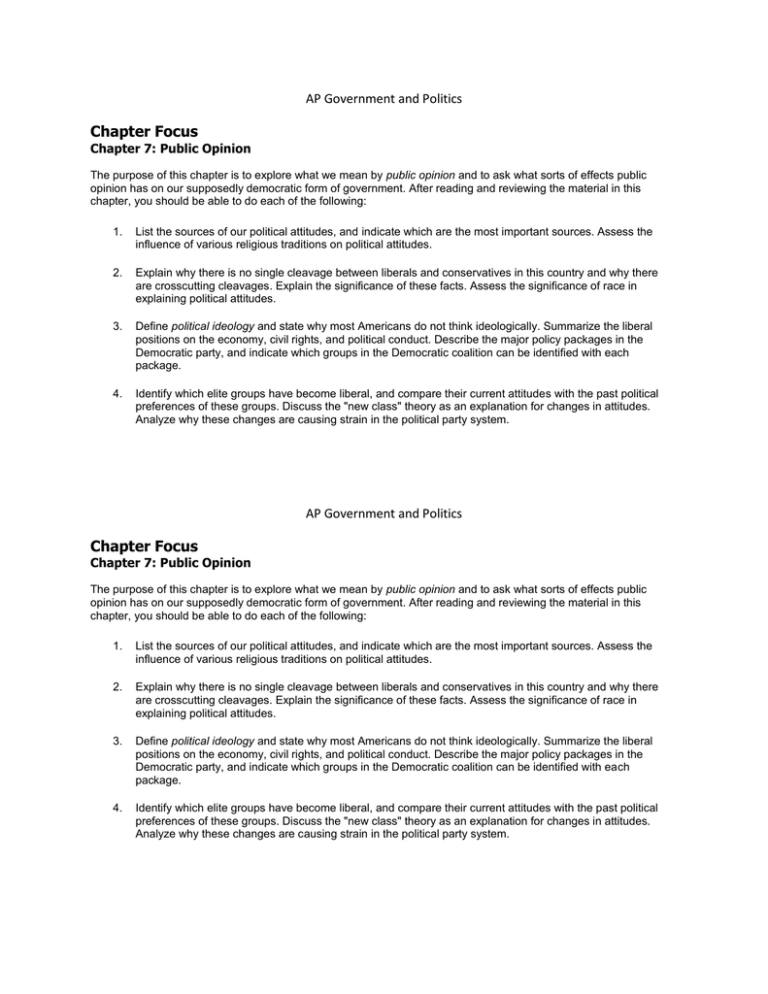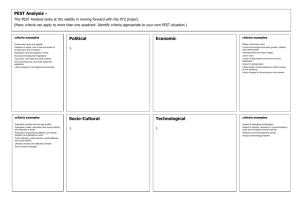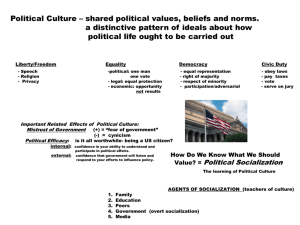Chapter 7 Focus Questions
advertisement

AP Government and Politics Chapter Focus Chapter 7: Public Opinion The purpose of this chapter is to explore what we mean by public opinion and to ask what sorts of effects public opinion has on our supposedly democratic form of government. After reading and reviewing the material in this chapter, you should be able to do each of the following: 1. List the sources of our political attitudes, and indicate which are the most important sources. Assess the influence of various religious traditions on political attitudes. 2. Explain why there is no single cleavage between liberals and conservatives in this country and why there are crosscutting cleavages. Explain the significance of these facts. Assess the significance of race in explaining political attitudes. 3. Define political ideology and state why most Americans do not think ideologically. Summarize the liberal positions on the economy, civil rights, and political conduct. Describe the major policy packages in the Democratic party, and indicate which groups in the Democratic coalition can be identified with each package. 4. Identify which elite groups have become liberal, and compare their current attitudes with the past political preferences of these groups. Discuss the "new class" theory as an explanation for changes in attitudes. Analyze why these changes are causing strain in the political party system. AP Government and Politics Chapter Focus Chapter 7: Public Opinion The purpose of this chapter is to explore what we mean by public opinion and to ask what sorts of effects public opinion has on our supposedly democratic form of government. After reading and reviewing the material in this chapter, you should be able to do each of the following: 1. List the sources of our political attitudes, and indicate which are the most important sources. Assess the influence of various religious traditions on political attitudes. 2. Explain why there is no single cleavage between liberals and conservatives in this country and why there are crosscutting cleavages. Explain the significance of these facts. Assess the significance of race in explaining political attitudes. 3. Define political ideology and state why most Americans do not think ideologically. Summarize the liberal positions on the economy, civil rights, and political conduct. Describe the major policy packages in the Democratic party, and indicate which groups in the Democratic coalition can be identified with each package. 4. Identify which elite groups have become liberal, and compare their current attitudes with the past political preferences of these groups. Discuss the "new class" theory as an explanation for changes in attitudes. Analyze why these changes are causing strain in the political party system.









